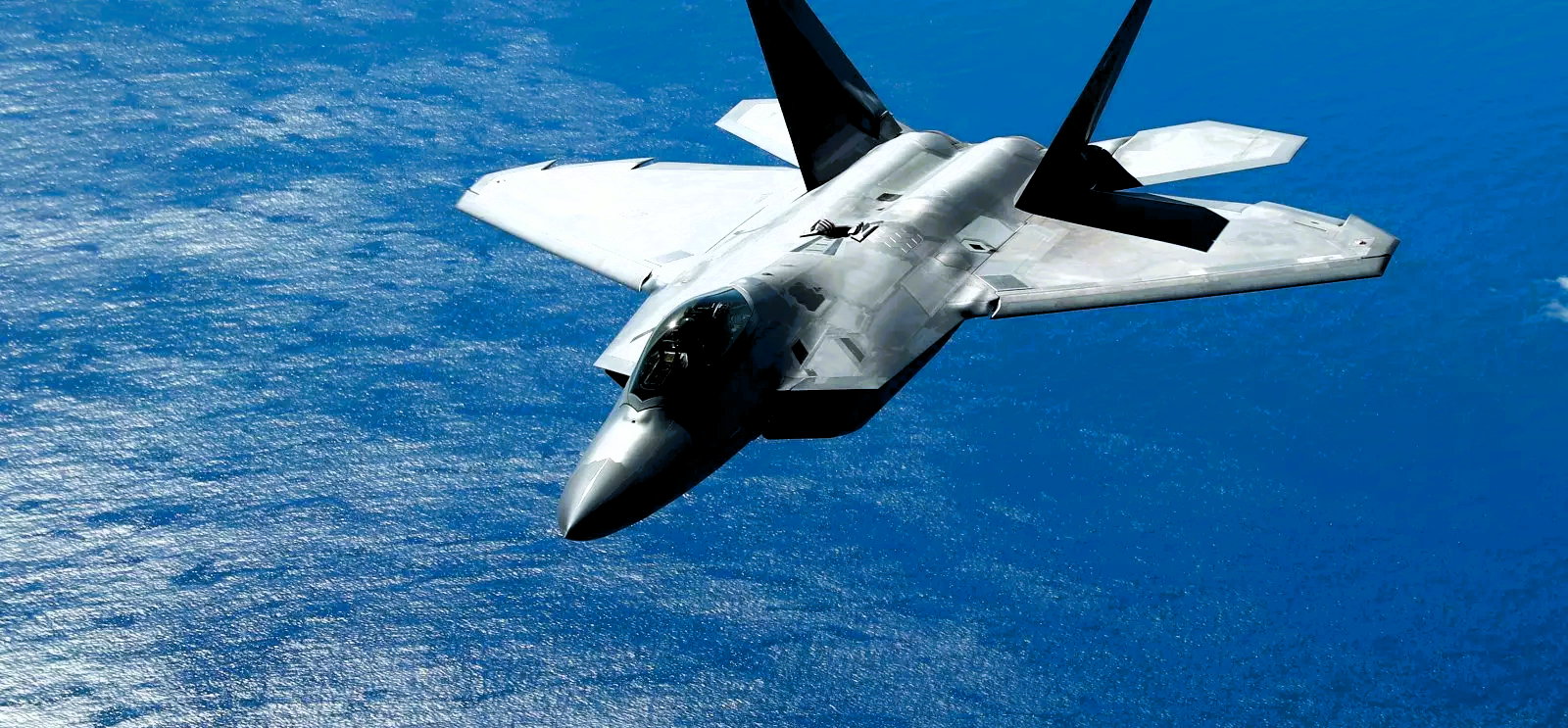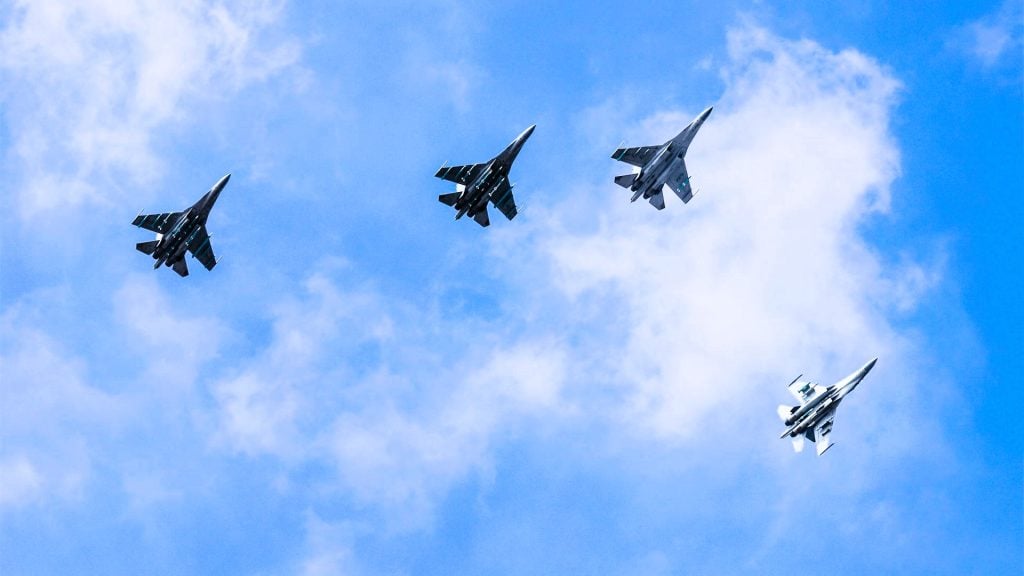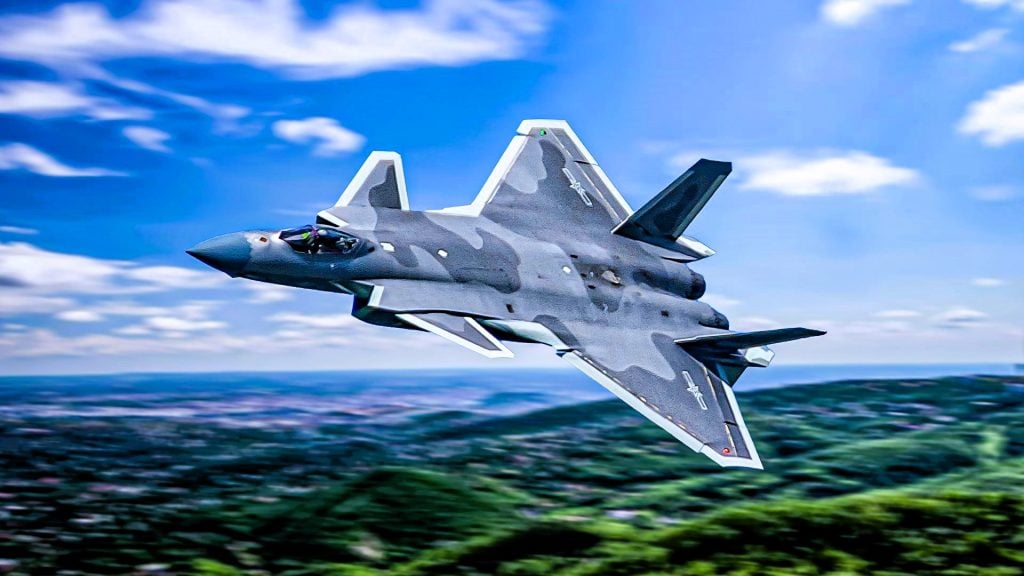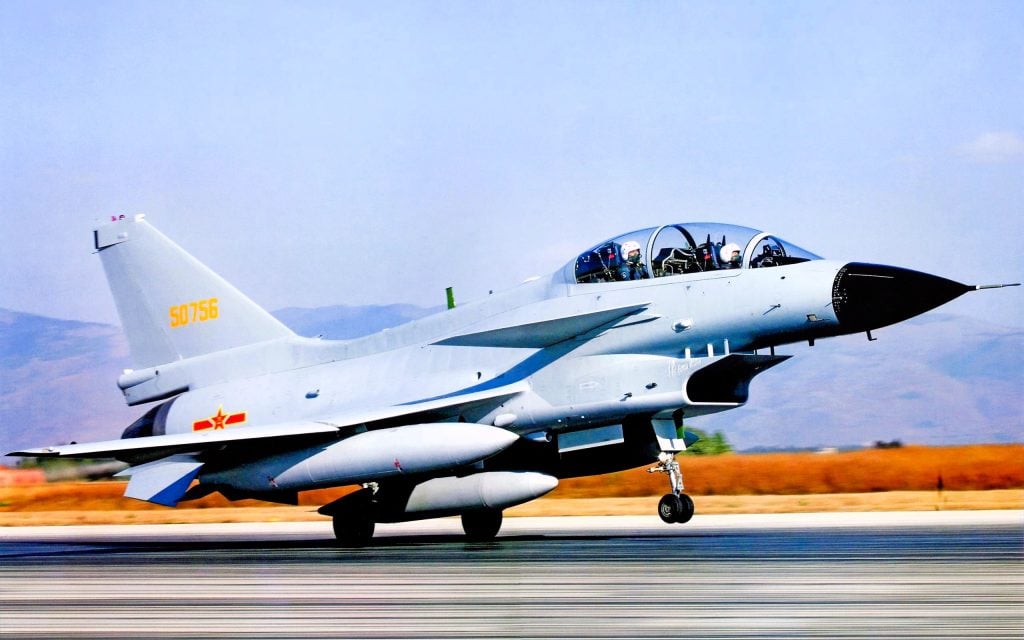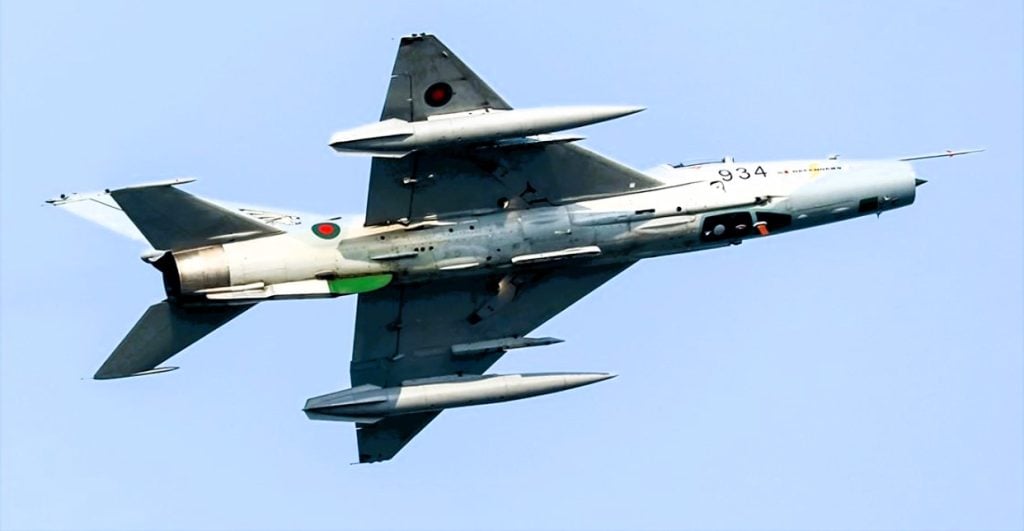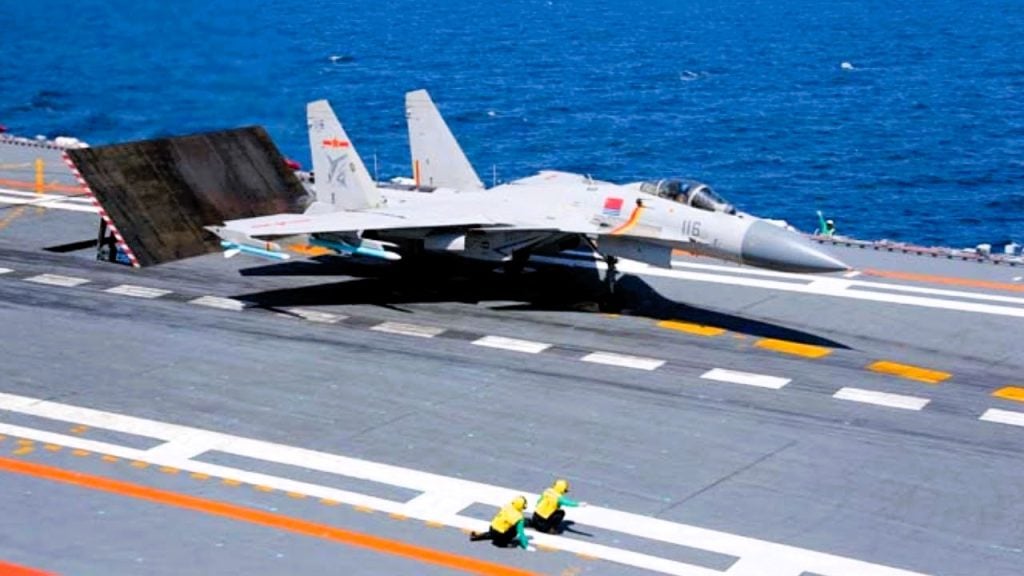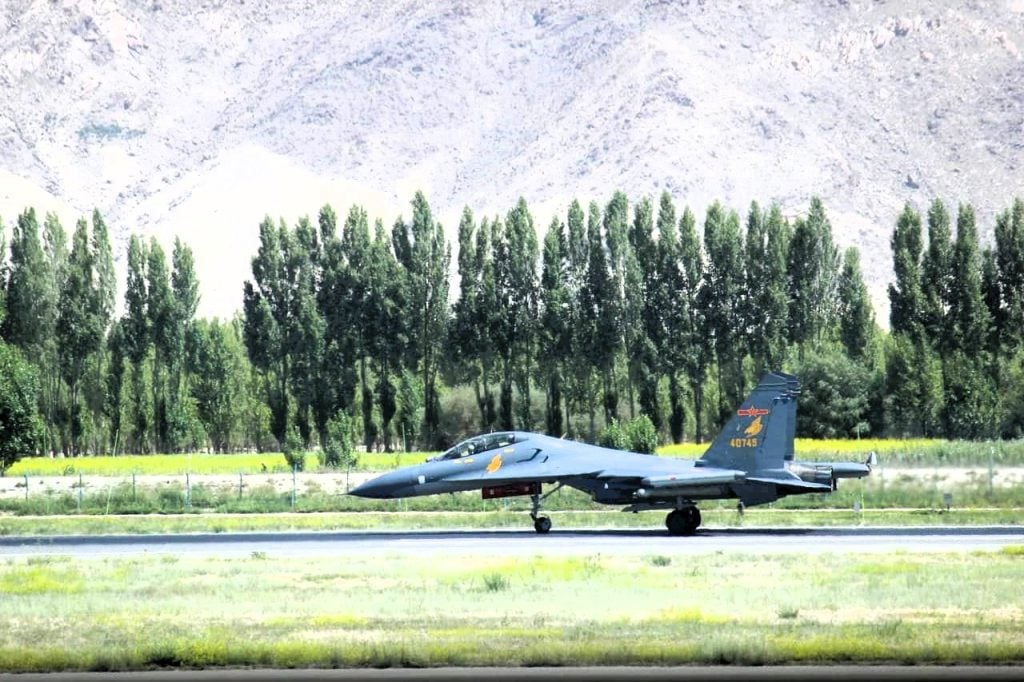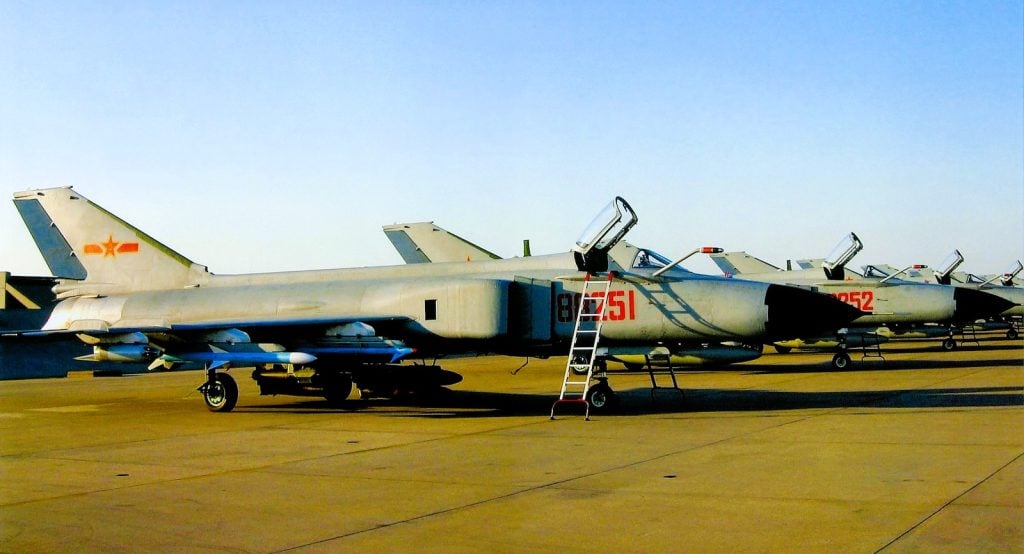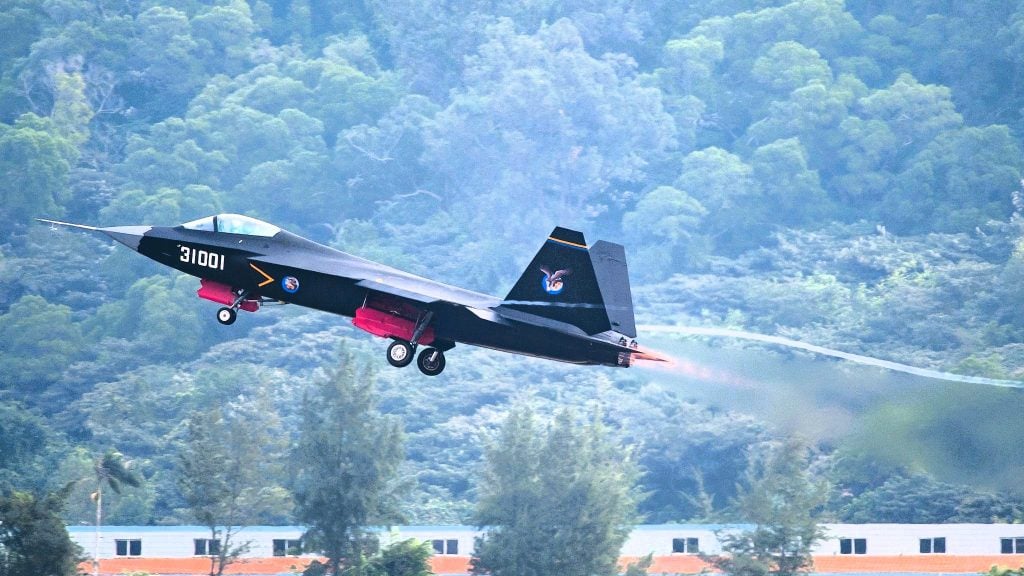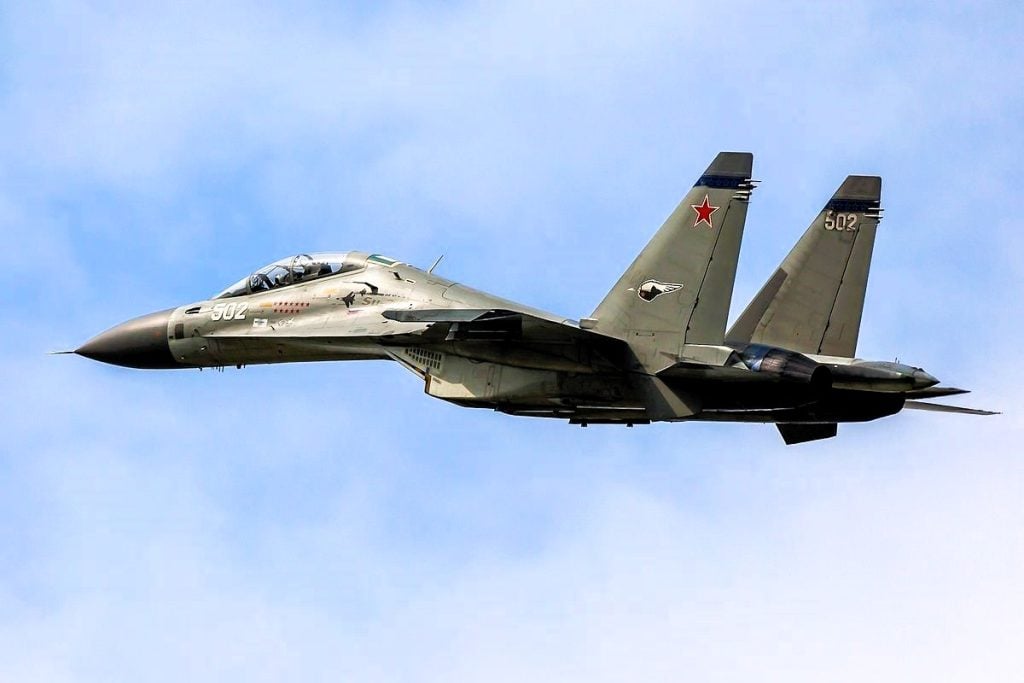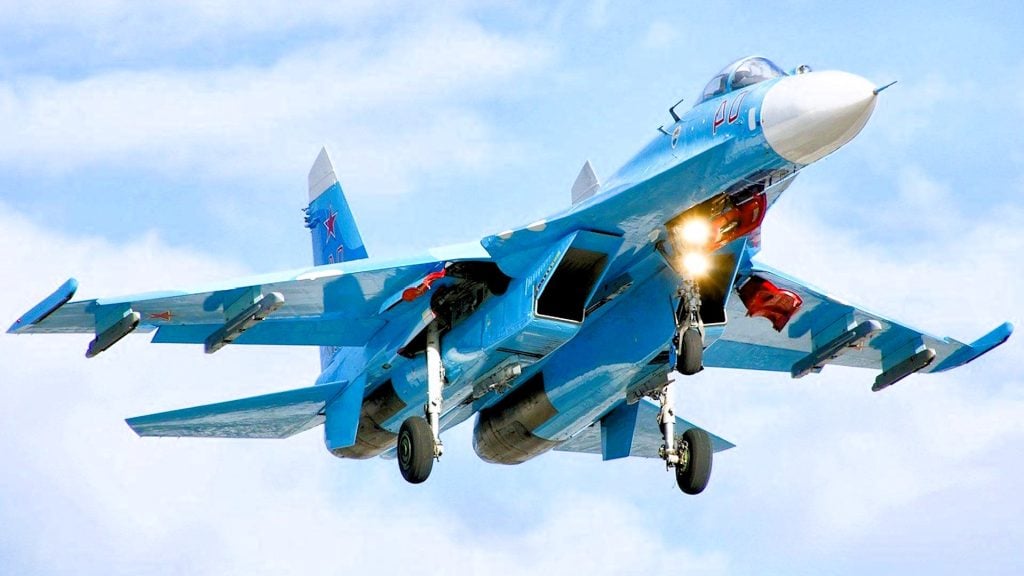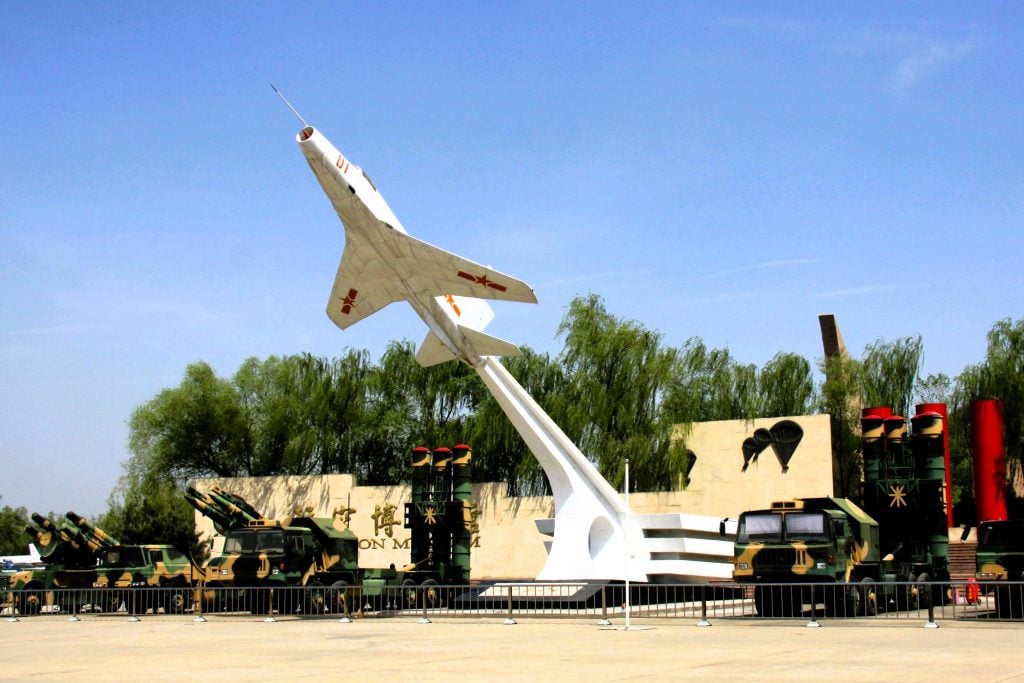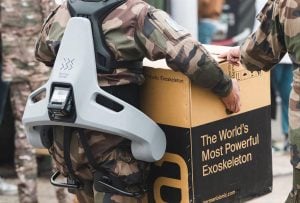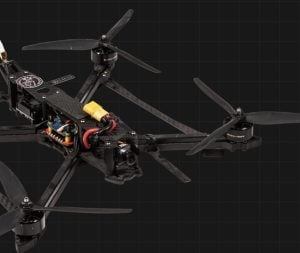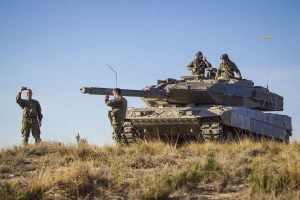The Chinese military has undergone a remarkable transformation over the past century, emerging as a global superpower with a formidable air force. The People’s Liberation Army Air Force (PLAAF) has evolved from a fledgling force to a technologically advanced arm of the Chinese military, boasting an impressive arsenal of fighter jets. These aircraft not only project China’s national prestige but also serve as a testament to the country’s growing self-sufficiency in the realm of military aviation.
In this comprehensive guide, we delve into the Top Chinese Fighter Jets of the PLA Air Force and solidified China’s position as a major player in the global airpower landscape. From the cutting-edge stealth fighter, the Chengdu J-20, to the iconic Shenyang J-11 that draws inspiration from Russian designs, each of these aircraft showcases the technological prowess and strategic ambitions of the Chinese military.
10 Safest Armored Personnel Carriers In the World 2024
1. Chengdu J-20
The Chengdu J-20 is the crown jewel of the PLAAF, a true fifth-generation stealth fighter jet designed to rival the capabilities of the American F-35 Lightning II. Unveiled in 2011, the J-20 is a testament to China’s growing technological capabilities, incorporating state-of-the-art components and advanced stealth features. With its sleek design, powerful Shenyang WS-10B engines, and cutting-edge electronic systems, the J-20 is poised to challenge the dominance of Western fighter aircraft in the skies.
Technological Advancements
The J-20’s stealth capabilities are a closely guarded secret, but it is widely believed to incorporate advanced radar-absorbing materials and innovative aerodynamic shaping to reduce its radar cross-section. The aircraft’s electronic warfare suite is also rumored to be highly sophisticated, potentially rivaling the F-35’s advanced sensor and communication systems.
Operational Capabilities
While the exact number of J-20s in service remains classified, the PLAAF is steadily increasing its fleet of these formidable fighters. The J-20’s air superiority and strike capabilities make it a formidable asset in China’s military arsenal, capable of engaging in long-range missions and penetrating heavily defended airspace.
2. Chengdu J-10
The Chengdu J-10 is a versatile multirole fighter that has been a mainstay of the PLAAF for decades. Developed with the assistance of Russian experts, the J-10 combines Chinese and Soviet design elements, resulting in a capable and reliable aircraft. While it may not possess the same level of stealth as the J-20, the J-10 has proven its worth in a wide range of combat roles, from air-to-air combat to ground attack missions.
Design and Capabilities
The J-10 is powered by a Russian-made Lyulka-Saturn AL-31FN engine, which provides the aircraft with impressive speed and maneuverability. Its avionics and weapons systems have been continuously upgraded over the years, ensuring that the J-10 remains a formidable asset in the PLAAF’s arsenal.
Global Partnerships
The J-10’s success has extended beyond China’s borders, with the Pakistani Air Force becoming a major operator of the aircraft. This international partnership highlights the growing reputation and export potential of Chinese-made fighter jets.
3. Chengdu J-7
The Chengdu J-7, a Chinese-built version of the legendary Soviet MiG-21 fighter jet, has been a mainstay of the PLAAF for decades. Although it may not possess the cutting-edge capabilities of newer fighter jets, the J-7 has played a crucial role in China’s air defense and deterrence strategies.
Longevity and Operational History
Despite its age, the J-7 remains in active service with the PLAAF and Chinese Navy, with estimates suggesting that over 300 of these aircraft are still operational. The J-7 has also found success on the global market, with countries like Iran, Egypt, and Myanmar incorporating the fighter into their own air forces.
Transitional Significance
The J-7’s prominence in the PLAAF’s early years symbolizes China’s shift from reliance on Soviet-era technology to developing its own indigenous fighter jet capabilities. This aircraft marked a vital transition point in China’s aviation history, paving the way for the more advanced fighters that would follow.
4. Shenyang J-15
The Shenyang J-15 is a carrier-based fighter jet that draws inspiration from the Russian Su-33 design. Introduced in 2013, the J-15 represents China’s efforts to develop a capable naval aviation force, with the aircraft being operated from the country’s growing fleet of aircraft carriers.
Carrier-Centric Capabilities
The successful landing of J-15 fighter jets on the aircraft carrier Liaoning in 2012 was a significant milestone, demonstrating China’s progress in carrier-based aviation. While the J-15 is considered a fourth-generation fighter, its ability to operate from the sea has made it a crucial asset in China’s maritime defense strategy.
Technological Challenges
The J-15 has faced some challenges, particularly in adverse weather conditions, highlighting the ongoing efforts to refine and improve the aircraft’s performance. Nevertheless, the J-15 remains an important component of the PLAAF’s carrier-based air power.
5. Shenyang J-11
The Shenyang J-11 is a Chinese-built fighter jet that draws heavily from the design of the Russian Su-27 fighter. Initially, the J-11 was planned to be powered by a Rolls-Royce engine, but ultimately, the aircraft was equipped with the Russian-made Lyulka AL-31F powerplant.
Technological Evolution
Over time, the J-11 has evolved, with the J-11B variant incorporating Chinese-built WS-10A engines, demonstrating China’s growing self-sufficiency in fighter jet production. The J-11’s impressive top speed of Mach 2.1 highlights its performance capabilities.
Operational Significance
The J-11 is employed by both the PLAAF and the Chinese Navy, underscoring its versatility and importance in China’s air power arsenal. With an estimated 300 J-11 fighters still in active service, this aircraft continues to play a crucial role in the PLAAF’s defensive and offensive operations.
5 Top Nuclear Submarines in the World 2024
6. Shenyang J-8
The Shenyang J-8 is a testament to the longevity and adaptability of Chinese fighter jet designs. Introduced in the 1960s, the original J-8 has undergone several upgrades, with the J-8II variant remaining in active service with the PLAAF.
Interceptor Capabilities
The J-8 was initially designed as a lightweight interceptor, a role that it has fulfilled for decades. While newer fighter jets like the J-10 and J-20 are expected to gradually replace the J-8, the aircraft’s endurance and reliability have made it a reliable asset in the PLAAF’s air defense arsenal.
Operational Numbers
Precise service numbers for the J-8 are difficult to obtain, but estimates suggest that around 300 of these fighters remain in active duty, with the majority being the upgraded J-8II version.
7. Shenyang FC-31
The Shenyang FC-31 is China’s answer to the American-made F-35 Lightning II, representing the country’s ambitions in the realm of fifth-generation fighter jets. Designed to challenge the dominance of the F-35, the FC-31 has drawn the attention of the United States military and its regional allies.
Technological Advancements
The FC-31’s development has been closely watched, with allegations that Chinese espionage may have enabled the country to obtain valuable information about the F-35 program. The FC-31’s stealth capabilities and advanced avionics are seen as a credible threat to the F-35’s market share in the global fighter jet arms race.
Global Impact
The emergence of the FC-31 has prompted increased research and development efforts by the United States and its allies in the Asia-Pacific region, as they seek to maintain their technological edge in the skies. The FC-31’s potential for export sales also poses a challenge to the dominance of American-made fighter jets in the global arms market.
8. Sukhoi Su-30MKK
The Sukhoi Su-30MKK, along with its MK2 variant, represents the enduring collaboration between the Soviet/Russian and Chinese military aviation industries. This highly maneuverable and swift fighter jet has found a home in the PLAAF, serving as a contemporary to the American F-15E Strike Eagle.
Modernization and Upgrades
The Su-30MKK has remained in active service with the PLAAF, with ongoing efforts to modernize and maintain the aircraft’s viability for the future. The PLAAF’s use of the Su-30MKK, as well as the Chinese Navy’s adoption of the fighter, demonstrates the versatility and continued relevance of this Russian-designed platform.
Performance Capabilities
The Su-30MKK’s ability to reach Mach 2 and its highly maneuverable characteristics have made it a formidable asset in the PLAAF’s arsenal. The aircraft’s integration into both the air force and naval aviation units underscores its strategic importance in China’s overall military power projection.
9. Sukhoi Su-35
The Sukhoi Su-35 is the latest iteration of the iconic Su-series fighters, which have long been a staple of the Soviet and Russian air forces. China’s acquisition of the Su-35 represents the continued reliance on Russian-designed aircraft within the PLAAF, as well as the ongoing technological cooperation between the two countries.
Intellectual Property Disputes
The procurement of the Su-35 has not been without its challenges, as China and Russia have clashed over the ownership of intellectual property rights related to the revamped fighter jet models. These disputes highlight the complexities inherent in the military-industrial collaboration between the two nations.
Operational Integration
Despite the intellectual property concerns, the PLAAF has successfully integrated the Su-35 into its fleet, leveraging the aircraft’s impressive capabilities to bolster China’s air power. The Su-35’s role within the PLAAF underscores the continued importance of Russian-designed fighters in China’s military aviation strategy.
10. Sukhoi Su-27
The Sukhoi Su-27 is a fighter jet that has left an indelible mark on the PLAAF’s history. Produced in the final years of the Soviet Union, the Su-27 was designed to compete with the American F-14 Tomcat, and China’s acquisition of these aircraft has had a lasting impact on the country’s military aviation.
Technological Influence
The Su-27’s influence can be seen in the design of the Shenyang J-11, which was developed under a Chinese license and based on the Soviet-era fighter. This cross-pollination of technologies and design elements highlights the close ties between the Soviet/Russian and Chinese military aviation industries.
Operational Significance
While the sale of the Su-27 abroad was limited, China’s acquisition of these fighters has contributed to the PLAAF’s capabilities and served as a foundation for the development of more advanced indigenous fighter jets.
11. Nanchang J-12
The Nanchang J-12 represents one of China’s earliest attempts to develop an indigenous fighter jet, marking a significant transition point in the country’s military aviation history. Produced during the tumultuous Cultural Revolution, the J-12 symbolized a break from China’s heavy reliance on Soviet-era fighter jets.
Transitional Significance
Although only a handful of J-12 fighters were ever built, and they were only used for test flights, the aircraft’s development was a vital step in China’s journey towards greater self-sufficiency in military aviation. The J-12 marked a shift in China’s approach, moving away from its dependence on foreign designs and towards the creation of its own fighter jet capabilities.
Legacy and Lessons Learned
The J-12’s limited success did not diminish its importance in China’s aviation history. The lessons learned from this early indigenous effort contributed to the country’s subsequent advancements in fighter jet design and production, ultimately leading to the impressive array of aircraft that make up the PLAAF’s modern inventory.
13 Best Air Defense Systems In India
Conclusion
The evolution of the People’s Liberation Army Air Force over the past century has been a remarkable journey, marked by China’s transformation from a nation reliant on Soviet-era fighter jets to a global military superpower with a technologically advanced air force. The 11 Chinese fighter jets highlighted in this article represent the pinnacle of the PLAAF’s capabilities, showcasing the country’s growing self-sufficiency, strategic ambitions, and technological prowess.
From the cutting-edge stealth fighter, the Chengdu J-20, to the iconic Shenyang J-11 that draws inspiration from Russian designs, each of these aircraft has played a significant role in shaping China’s military aviation landscape. The PLAAF’s steady progress, from the early indigenous efforts of the Nanchang J-12 to the formidable fifth-generation challenger, the Shenyang FC-31, underscores the country’s unwavering commitment to bolstering its air power capabilities.
As China continues to assert its global influence, the PLAAF’s fighter jet arsenal will undoubtedly remain a crucial component of the country’s military might, projecting national prestige and serving as a deterrent against potential adversaries. The 11 best Chinese fighter jets highlighted in this article are a testament to the nation’s technological advancements, strategic vision, and its aspiration to become a dominant force in the skies.
FAQs
1. How many J-20 jets does China have?1.
The J-20 program has made remarkable strides since it began, leading to the production of around 250 aircraft, with over 200 currently in active service.
2. How many aircraft does PLA Air Force have?
The People’s Liberation Army Air Force maintains a diverse fleet of approximately 4,000 aircraft, with about 2,566 dedicated to combat roles, including fighters, attack planes, and bombers.
3. Who has the 3rd largest Air Force?
China: The People’s Liberation Army Air Force (PLAAF) has swiftly risen to become the third largest and most formidable air power in recent decades. Boasting an inventory of 3,304 aircraft, the PLAAF is on the verge of overtaking the United States to become the world’s largest air force.
4. Is Indian Air Force better than China?
The Chinese Air Force, known as the People’s Liberation Army Air Force (PLAAF), has a larger fleet and more extensive strategic inventory compared to the Indian Air Force (IAF). However, the IAF boasts more reliable platforms, strategically positioned bases, and a highly experienced personnel.
5. Does China have advanced fighter jets?
China is swiftly advancing its air capabilities by rapidly deploying cutting-edge fifth-generation fighters, potentially transforming its airpower dynamics against potential rivals like the US and India.
